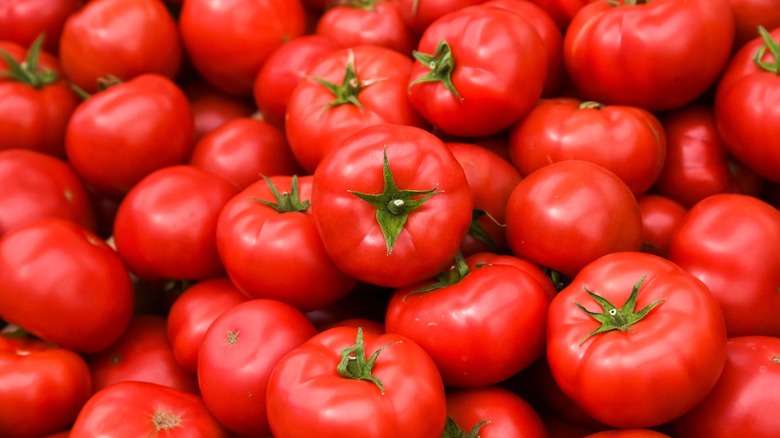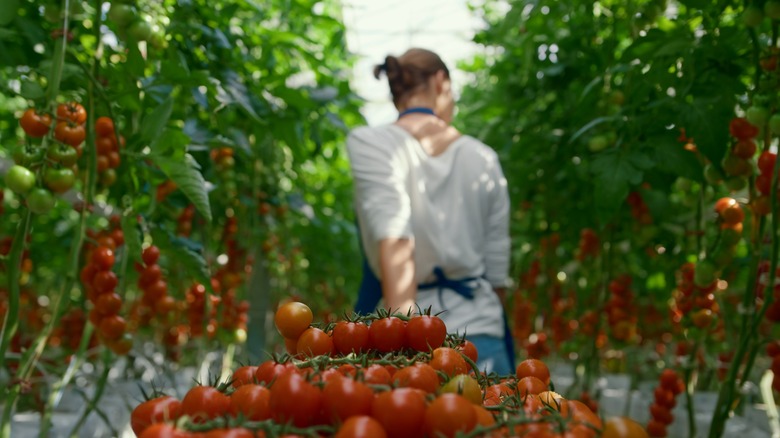It Turns Out That Tomatoes Have Been The Least Affected By Inflation
Many different foods have been hit by inflation over the last few years, and shoppers have unfortunately gotten used to paying a little bit extra for their groceries. Supply chain issues caused by the COVID-19 pandemic, the Russia-Ukraine war, and climate change have continuously caused product shortages, leading to steep price increases for the limited items actually available.
Fortunately, there is one produce item that seems to have escaped inflation, at least for the most part: tomatoes. Whether they're being used in a sauce, chopped up for a salad, or blended into a soup, tomatoes are a great source of fiber, Vitamin C, potassium, and antioxidants. Though the tomato is technically a fruit, it pairs well with vegetables, making it the perfect companion to savory dishes.
While tomatoes have still seen an increase in cost, the price hikes have been significantly reduced as compared to other foods. There are a number of factors that determine how much produce costs, and tomato fans can be grateful that the fruits have quite a few reasons for keeping prices down.
Tomato costs have stayed steady
Among common fruits and vegetables, tomatoes saw the lowest increase in cost, at only a 1% price increase from June 2021 to June 2022, according to a BECU analysis of data from the U.S. Bureau of Labor Statistics. By comparison, the next lowest was apples, at 6%.
Quartz reports that the pricing may have been stable due to the fact that tomatoes have already seen higher prices over the last few years, before the onset of the COVID-19 supply chain issues. Tomatoes being imported into the United States have a set minimum cost, ensuring that one exporter does not create a monopoly on selling the fruits.
Additionally, tomatoes can be grown year-round in warm climates, so farmers do not need to wait to plant the produce seasonally. Tomatoes can still see cost increases when production is slowed by droughts and weather changes, but many farmers are able to continue production continuously. Demand for the fruits has also remained fairly stable, reducing the risk of increased costs.
America grows its own tomatoes
The United States is the second-largest producer of tomatoes in the world, behind China. The United States produced roughly 11.19 million tons of tomatoes in 2019, and generally produces anywhere from nine to 14.7 million tons each year. California and Florida are the largest tomato-growing states, and California does a majority of the country's processing of the plants.
Although tomatoes may be relatively safe from price inflation, plenty of other fruits and vegetables have seen steady cost increases. Per BECU's analysis of BLS data, the cost of oranges and lettuce each rose by 11% from June 2021 to June 2022.
To combat the effects of inflation, BECU advises consumers to purchase fresh produce items in smaller quantities, buying only what you need. Then, you can use up what you want to eat, without leaving any leftover produce that will potentially go bad in the fridge.


